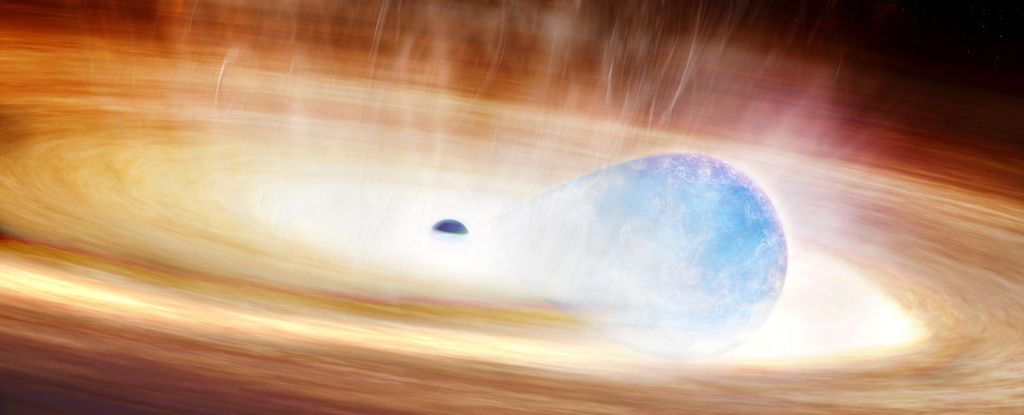
In a remarkable astronomical event, astronomers reported the discovery of a supernova, designated as SN 2023zkd, which may have been triggered by a star attempting to consume a black hole. This extraordinary explosion was first detected on July 7, 2023, approximately 750 million light-years from Earth, by the Zwicky Transient Facility. Initially, the event appeared typical, representing the explosive death of a star. However, follow-up observations revealed unusual behaviour, prompting further investigation.
Six months after its initial observation, SN 2023zkd was flagged as anomalous due to a subsequent brightening, an event rarely observed in supernovae. According to astronomer Alexander Gagliano from the NSF Institute for Artificial Intelligence and Fundamental Interactions, this brightening suggests a complex interaction between a massive star and its black hole companion. “Our analysis shows that the blast was sparked by a catastrophic encounter with a black hole companion, and is the strongest evidence to date that such close interactions can actually detonate a star,” he stated.
Supernovae are typically caused by the death of massive stars or thermonuclear explosions on white dwarfs, with hundreds of observable events occurring each year in the universe. They generally follow a predictable pattern: an initial flare of light followed by gradual dimming. The first observations of SN 2023zkd conformed to these expectations, but a deeper look into archival data revealed an intriguing story.
In January 2024, a tool designed to identify unusual cosmic events prompted astronomers to re-examine SN 2023zkd. Observations showed that, 240 days after the initial detection, the supernova brightened again to nearly the same intensity as the first explosion. This behaviour is atypical for supernovae, leading researchers to explore data from various observatories for clues leading up to the explosion.
Using machine learning techniques, the team discovered that the object had been gradually brightening for over four years prior to the supernova event, accompanied by irregular fluctuations. Such long-term behaviour is not characteristic of stars on the verge of exploding. The researchers posited that the event likely involved a massive dying star orbiting a compact object, such as a black hole.
As these two celestial bodies orbited each other, the star lost significant mass, which began to emit light. Eventually, the gravitational pull of the black hole became so strong that it interacted destructively with the star, triggering the supernova. The initial peak in brightness was due to the supernova’s shockwave colliding with surrounding low-density gas, while the subsequent peak stemmed from interactions with a dense cloud of material ejected by the star during its final years.
The fluctuations observed prior to the explosion indicated a system under stress from the black hole. Interestingly, black holes, despite their immense gravitational pull, behave similarly to stars of comparable mass when at a distance. However, their compact nature allows them to exert gravitational influence at much closer ranges, which can lead to dramatic interactions with nearby stars.
The implications of this discovery are significant. If the black hole had a mass comparable to the star, it could either have been pulled into the star or completely consumed it before the explosion occurred. Both scenarios would result in the formation of a larger black hole while displaying similar reactions from the surrounding material.
“We’re now entering an era where we can automatically catch these rare events as they happen, not just after the fact,” Gagliano remarked. This advancement in astronomical observation allows scientists to better understand the life cycles of stars and the factors that lead to their explosive ends.
The findings from this study will be published in The Astrophysical Journal, with a preprint available on arXiv. As researchers continue to uncover the mysteries of the universe, the event surrounding SN 2023zkd highlights the intricate relationships between stars and black holes, paving the way for future discoveries in astrophysics.







